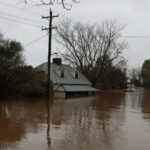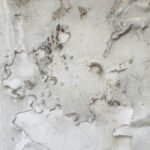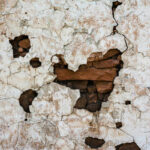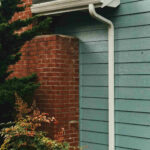Experiencing water damage can be highly upsetting experience. However, understanding the causes, potential consequences, and effective ways to manage water damage can significantly ease your worries and help you tackle the issue more effectively. Here are 7 useful things to know about water damage to your home.

Common Causes of Water Damage
Water damage can result from various sources, including:

- Natural Disasters: Thunderstorms, hurricanes, and other events causing flooding.
- Pipe Bursts: Sudden failures in plumbing systems.
- Appliance Malfunctions: Issues with washing machines, dishwashers, or water heaters.
- Roof Leaks: Rainwater seeping through damaged roofing.
- Foundation Leaks: Water penetrating through foundation cracks.
- Septic Tank Overflows: Spillage from failed septic systems.
- Poor Drainage: Ineffective water management around your property.
Particularly hazardous are flash floods, pipe bursts, and sewage backups, which can inundate your space with several inches of water in under a day.
Common Signs of Water Damage

Tell-tale signs of water damage to be on the look-out for:
- Stains and Discoloration: Yellow, brown, or copper-coloured spots on ceilings and walls.
- Peeling Paint or Wallpaper: Bubbling or peeling surfaces.
- Warped Floors: Buckling or warping in hardwood or laminate flooring.
- Musty Smell: Persistent damp, musty smells indicating mould growth.
- Mould: Visible mould spots on walls, ceilings, or floors.
- Increased Utility Bills: Unexpected spikes in water bills can suggest hidden leaks.
Spotting these signs early can help you address water damage before it worsens.
The Dangers of Water Damage
Floodwater and sewage leaks pose significant health risks due to contaminants like viruses and bacteria. Here’s why you need to take action quickly:

- Health Hazards: Contaminated water can spread dangerous viruses and bacteria.
- Structural Damage: If water isn’t drained within 24-48 hours, it can compromise your home’s structure.
- Mould Growth: Both sudden floods and slow leaks can encourage mould, which spreads quickly if left unchecked.
Promptly addressing water damage helps preserve the integrity of your home and protect your health.
What to Do After a Flood or Water Leak

- Shut Off Utilities: If it’s safe, turn off water and electricity in your home to prevent further damage.
- Avoid Unsafe Areas: Do not enter your home if there’s structural damage.
- Steer Clear of Floodwater: Avoid walking through floodwater if the electricity is still on and to minimize exposure to contaminants like viruses and bacteria.
- Notify Your Insurance: Start the claim process with your insurance company right away.
- Contact a Restoration Company: Immediately reach out to a water damage restoration company to prevent mould and irreversible damage to wood, walls, and carpets.
Acting quickly and safely can limit the extent of water damage and ensure your safety.
Considering Specialist Help
Here’s a few things that water damage professionals can do to support you:

- Remove Damaged Materials: They can take out damaged items like baseboards, insulation, furniture, carpeting, upholstery, and carpet padding, for either restoration or disposal.
- Dry and Disinfect: They use specialized tools like air movers and powerful dehumidifiers to dry out the affected areas and disinfect them.
- Handle Mould Damage: Professionals will disinfect and restore mould-infected surfaces quickly to prevent further spread.
By engaging specialists, you could access a thorough and efficient restoration process, safeguarding your home from further damage.
Understand Your Home Insurance Coverage
To be prepared for water damage, it’s crucial to understand what your home insurance covers:

- Sudden and Accidental Damage: Check whether your home insurance includes unexpected incidents like water heater ruptures or pipe bursts.
- Exclusions for Flood Damage: Standard policies do not cover flood damage from storms, sewer backups, or overflowing water bodies. For this, you need separate flood insurance through the National Flood Insurance Program.
- Maintenance-Related Damage: Damage due to lack of maintenance may not be covered by a standard homeowners insurance policy.
Knowing these distinctions helps you to be better prepared and to ensure that you have the necessary coverage instead of another unwelcome surprise in a crisis.
Preventing Recurring Water Damage
To keep water damage from happening again, consider these steps:

- Regular Inspections: Routinely check your roof, plumbing, and foundation for signs of wear or leaks.
- Maintain Gutters and Downspouts: Ensure they are clean and directing water away from your home.
- Install a Sump Pump: A sump pump in the basement can help manage excess water accumulation.
- Seal Cracks: Repair any cracks in walls, floors, and foundations.
- Upgrade Appliances: Replace old appliances and hoses to prevent malfunctions.
- Improve Drainage: Ensure proper water drainage around your home and install indicated drainage systems if needed.
Implementing these measures can greatly reduce the risk of recurring water damage.
Understanding some of the basics about the event of water damage is crucial for safeguarding your home. From recognizing the first signs of trouble to knowing what to do in an emergency, being prepared can save you from extensive damage and costly repairs. Remember to act quickly, contact professionals, and ensure your insurance coverage is adequate.
Also, take preventive measures and stay alert, to protect your home from the potentially devastating effects of water damage and to maintain a safe, healthy living environment.